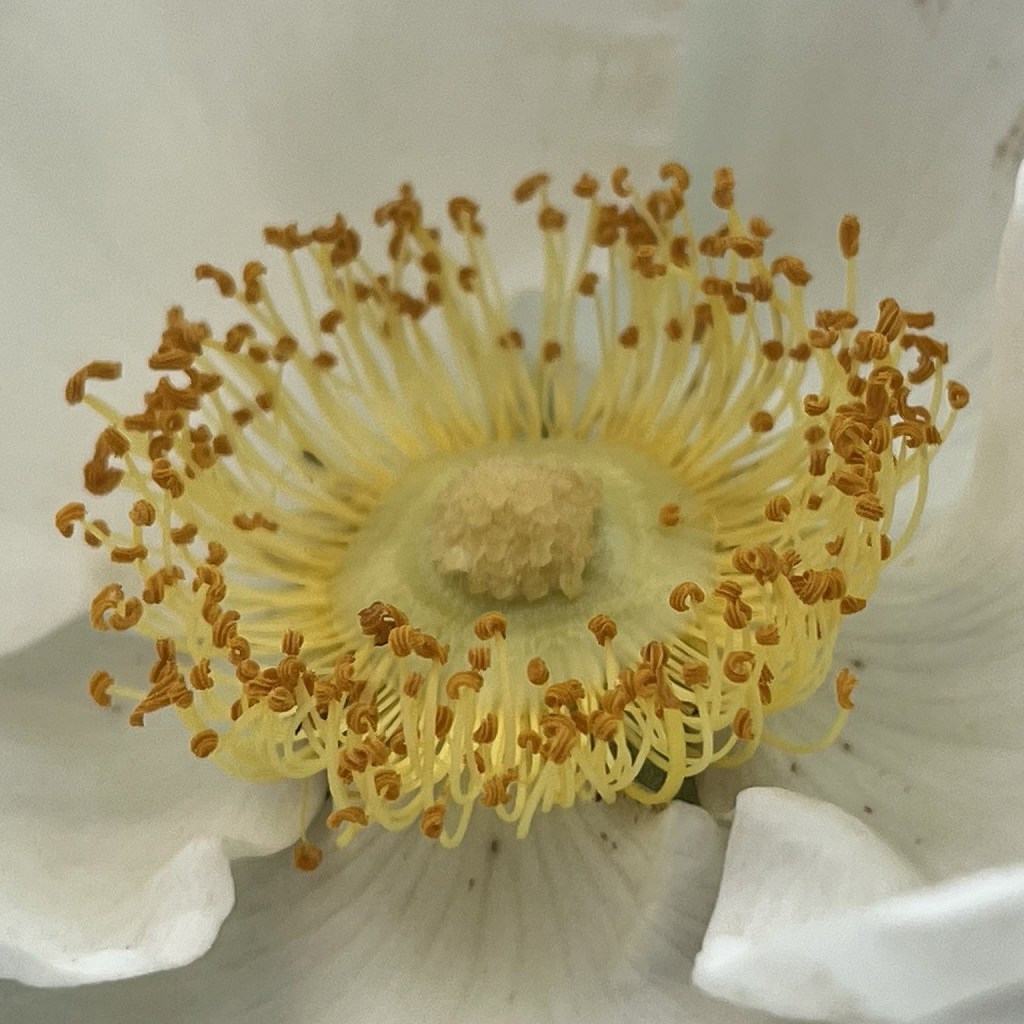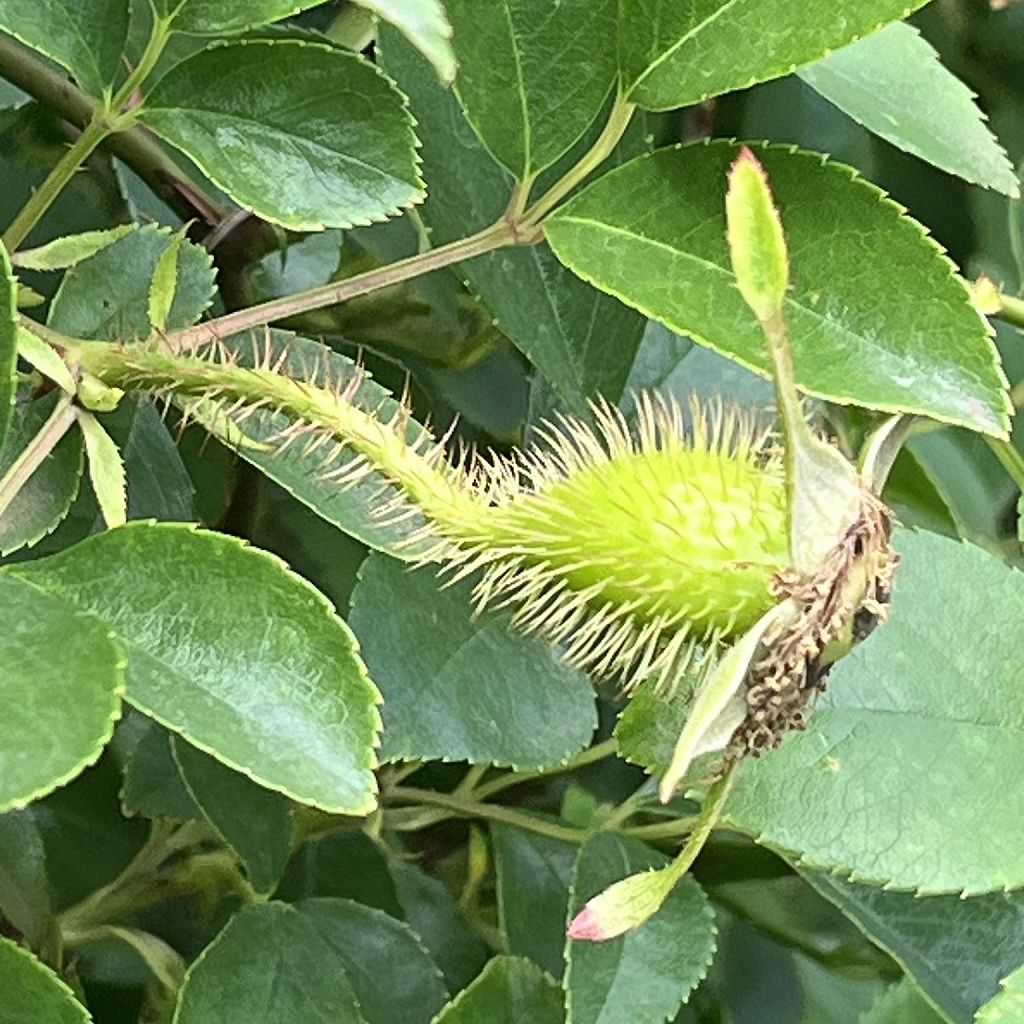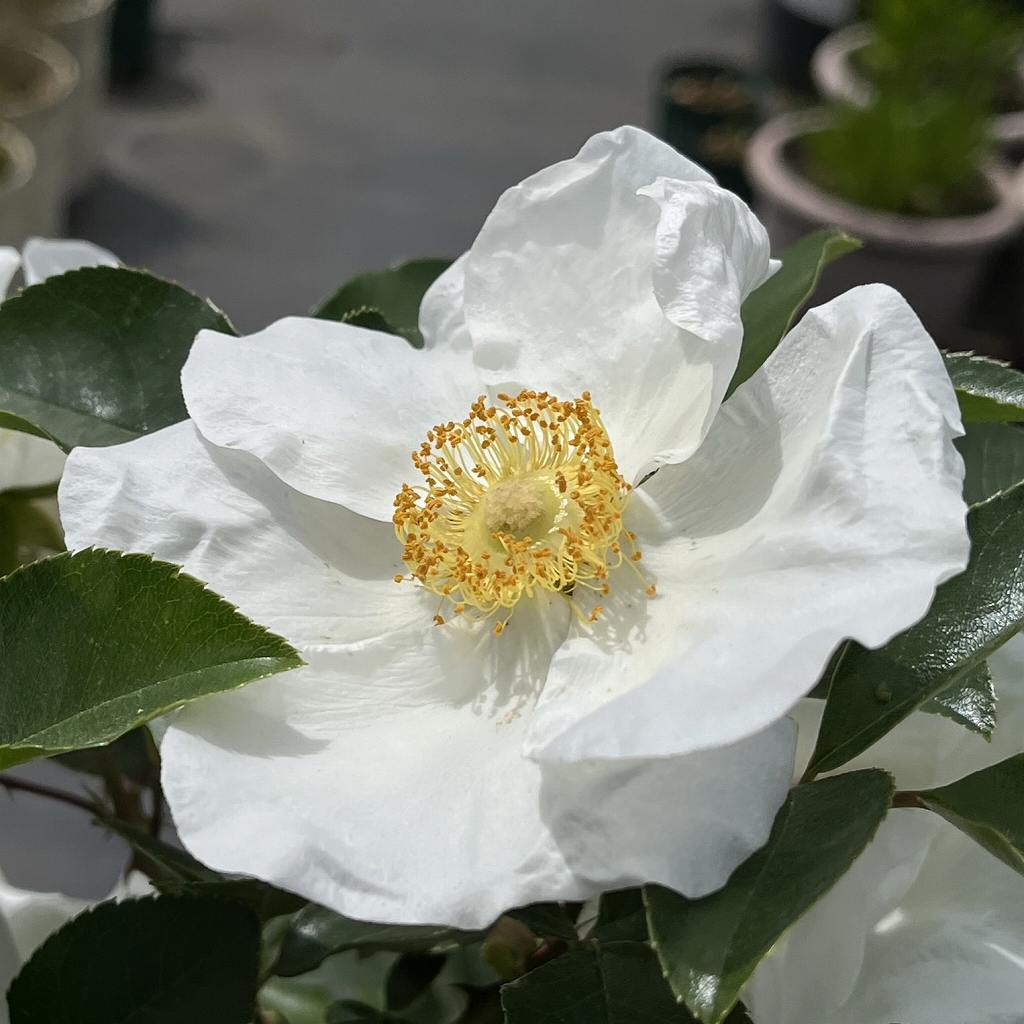ナニワイバラの英名は米国の先住民チェロキー族に由来。在所を追われ、子どもたちを亡くしたお母さんたちの、哀しみを象徴する薔薇です。
The English name Cherokee Rose comes from Native Americans. Cherokee mothers lost their children when they were driven from their homes by the Gold Rush. This rose symbolizes their sorrow.
【仮名】ナニワイバラ
【和名】難波茨, 浪花茨
【英名】Cherokee Rose
【学名】Rosa laevigata
【誕生】05/ 30
【開花】04, 05, 06月
【花色】White
ナニワイバラ
ナニワイバラの概要

ナニワイバラはバラ科の常緑低木です。原産地の中国では古くから生薬に利用。日本へは18世紀の初めに渡来し、観賞用で栽培が広がりました。米国へは18世紀の終わりに渡来し、南東部で野生化。花は初夏の一季咲きで、芳香があります。花言葉は「純粋な愛」「愛情と敬意」など。
ナニワイバラの名前

ナニワイバラの和名の「難波」の由来は大阪の植木屋や商人によって栽培が広がったからです。「茨」はトゲのある低木の総称。英名は米国の先住民チェロキー族に由来します。ゴールドラッシュで在所を追われ、子どもたちを亡くしたお母さんたち。その哀しみを象徴する薔薇です。
ナニワイバラの姿形

ナニワイバラの木は蔓性。鋭いトゲで他物に絡みながら枝を伸ばします。葉は三出複葉で互生。小葉は先端が尖った楕円形で、縁に細かい鋸歯が入り、表面に光沢があります。花は白色の花弁が5枚、黄色の雄しべが多数。萼筒と花柄に長いトゲが生えます。花後は褐色の偽果を形成。
ナニワイバラの利用

ナニワイバラの偽果はビタミンC、クエン酸、リンゴ酸、タンニンなどを含有。中国では生薬「金桜子」として夜尿症や尿もれ、下痢などに用いられます。根や花にも同じような効果がある一方、葉は腫れ物、潰瘍などに外用。総じて不意に漏れ出ないよう引き締める作用があります。
Cherokee Rose

Cherokee Rose is an evergreen shrub of the Rosaceae family. In its native China, it has long been used as a herbal medicine. It was introduced to Japan in the early 18th century, and its cultivation spread for ornamental purposes. It was introduced to the United States at the end of the 18th century, and it became naturalized in the southeastern part of the country. Its flowers bloom once in early summer and are fragrant. The flower language is “pure love” and “affection and respect”.
The Japanese name of Cherokee Rose means “Osaka”, because its cultivation spread by Osaka gardeners and merchants. The English name comes from the name of Native Americans. Cherokee mothers lost their children when they were driven from their homes by the Gold Rush. This rose symbolizes their sorrow.
The Cherokee Rose tree is a vine. The sharp thorns entwine the branches and grow. The leaves are trifoliate and alternate. The leaflets are oval with sharp tips, fine sawtooth edges, and glossy surfaces. The flowers have five white petals and many yellow stamens. The calyx tube and flower stalks have long thorns. After flowering, a brown false fruit forms.
The false fruit of Cherokee Rose contains vitamin C, citric acid, malic acid, tannins, etc. In China, it is used as a herbal medicine for bedwetting, urinary incontinence, and diarrhea. The roots and flowers have the same effect. The leaves are used for swelling and ulcers. In general, it has the effect of tightening the body to prevent unexpected leakage of contents.


